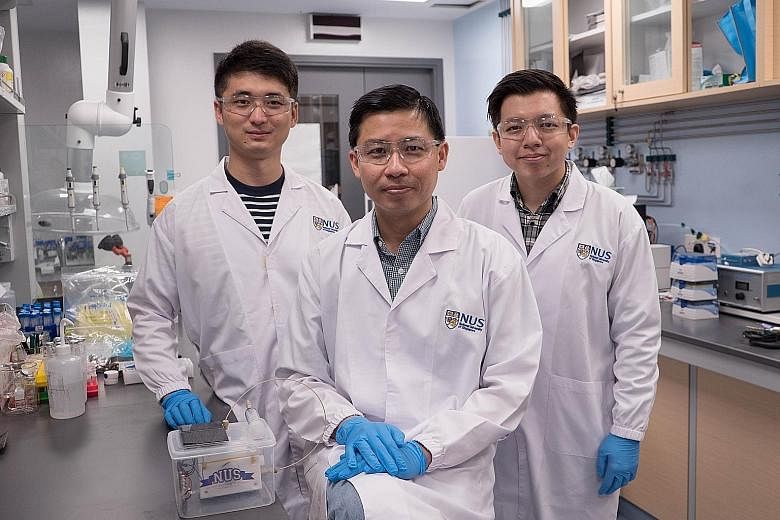They are immensely useful but plastics are also polluting the earth. Hundreds of millions of tonnes of carbon dioxide are released during their global production.
Assistant Professor Jason Yeo hopes to make this process much cleaner.
He heads a National University of Singapore (NUS) team that has created a way to do so using "artificial photosynthesis". The invention uses copper, water and carbon dioxide to make ethylene, a key building block of plastics, and releases no pollutants. The process can also be powered by light.
Normally, ethylene - a colourless gas - is produced by subjecting fossil fuels to temperatures ranging from 750 deg C to 950 deg C. This process, known as steam cracking, uses fossil fuels in two ways: to create the ethylene itself, and to generate the extremely high temperatures needed to "crack" the fossil fuels.
For every tonne of ethylene produced, about 2 tonnes of carbon dioxide are emitted. In 2015, global production of ethylene exceeded 170 million tonnes, an amount expected to go beyond 220 million tonnes by 2020.
Prof Yeo, 41, from NUS' Department of Chemistry, has been working on producing ethylene since 2012.He wanted to find an alternative way to produce plastics for two main reasons: Plastics play a central part in people's lives, and fossil fuel stocks are depleting worldwide.
So instead of using fossil fuels, his machine, which is slightly smaller than a football, runs electricity through copper to create ethylene from carbon dioxide and water.
The surface of the copper is placed against water, which has carbon dioxide dissolved in it.
The process "breaks up" the carbon dioxide and water on the copper, which acts as a catalyst for the reaction, and rearranges the atoms.
The carbon atoms from carbon dioxide combine with the hydrogen atoms from water to create ethylene, which comprises two carbon and four hydrogen atoms.
Prof Yeo chose copper because of its properties. The process hinges on carbon monoxide, broken down from the carbon dioxide, binding to copper at the right strength. Carbon monoxide would bind too strongly to metals such as nickel or platinum, and not react further to form the ethylene.
The process also does not consume copper, which is one of the more abundant metals on earth.
Even better, this process is non-pollutive, and his device can be powered using solar energy.
"An issue is the pollution that comes, thanks to the production of ethylene," said Prof Yeo. However, he stated: "The main issue is that we're going to run out of hydrocarbons from the ground, so we need to find another source."
His team is still far from commercialising this invention, however. For now, it produces only minuscule amounts of ethylene, and needs to be fed almost pure concentrations of carbon dioxide to work.
Commenting on Prof Yeo's work, Professor Beatriz Roldan Cuenya from research institution Fritz Haber Institute of the Max Planck Society said it represents a step forward in using carbon dioxide to make useful materials.
She said: "This research shows a beautiful example of an artificial photosynthetic system."


